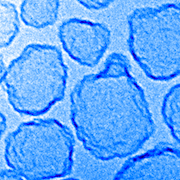Summary
Our research revolves around the notion that the extraordinary property profiles of biological structure materials rely on hierarchical structure formation, together with the precise control of the distribution of defects, disorder, mobility, as well as structural gradients and transitions at the molecular, nanoscopic and microstructural levels. We attempt to implement these ideas across our different research topics, which encompass hierarchical structure formation in supramolecular materials, tailoring materials for sustainability, unusual phenomena in organic semiconductor nanostructures, and novel routes towards functional carbon nanomaterials.
Laboratory Mission and Expertise
Our laboratory brings together materials scientists, chemists, physicists, and mechanical engineers into a diverse and multidisciplinary team that bridges materials chemistry, physics, processing, as well as structure and property characterization, aiming to take soft matter research all the way from molecules to materials and devices.
- We make and characterize molecular precursors for organic and polymer materials, with a focus on convenient and scalable approaches to novel molecular precursors for organic materials. Nature Chem. 2013, Chem. Eur. J. 2014, Chem. Sci. 2014.
- We are experts in supramolecular self-assembly, with a tool box based on multivalent ditopic hydrogen bonding ligands, π-interactions, engineered disorder, and self-assembly at interfaces. ACS Nano 2018
- We have extensive experience in the spectroscopic characterization of molecules and materials by UV/vis/NIR, circular dichroism, fluorescence, infrared, Raman, and vibrational circular dichroism spectroscopy. ACS Nano 2013, Am. Chem. Soc. 2014, Chem. Sci. 2014, J. Phys. Chem. B 2014.
- We process molecular precursors into organic and polymer materials with controlled microstructure, e.g., by melt extrusion, injection molding, and fiber drawing.
- We have an established expertise in imaging and diffraction techniques, including polarized optical microscopy, atomic force microscopy, scanning electron microscopy, (cryogenic) electron microscopy, and small and wide-angle X-ray diffraction techniques. Nature Chem. 2014, Nature Commun. 2014, ACS Nano 2013, Nano Lett. 2012.
- We have strong competences in the thermomechanical characterization of materials by differential scanning calorimetry, thermogravimetric analysis dynamic shear rheology, dynamic mechanical analysis, tensile testing, nanoindentation, impact testing, creep and fatigue testing, and constrained layer damping. Nature Commun. 2014.
- We use our materials to fabricate systems and devices, such as organic field-effect transistors, damping systems, railpads, or food packaging. Chem. Eur. J. 2020
Research Vision
Researchers in the field of supramolecular materials and soft matter have often been inspired by the fact that the often extraordinary and unusual property profiles of structural biomaterials have their origin in the formation of hierarchical structures across different length scale (Lakes, Science 1992; Ritchie, Nature Materials 2015), which in turn is well understood to be the result of meticulously designed competing interactions (Muthukumar, Science 1997). Given the miraculous degree of structural perfection across a large range of length scales observed in such materials, it is easy to overlook the crucial role of defects and disorder in this context. While materials are often considered as either ordered or disordered, the reality is more complex. A whole range of states with different degrees of order exists on the order-disorder trajectory between crystals and either liquids or glasses. Moreover, defects in otherwise well-ordered materials are not only inevitable due to entropy considerations but, in fact, often even responsible for important aspects of the materials’ macroscopic properties. This is particularly true for biological structure materials who are not only the role model for hierarchical structure formation in which the presence of disorder appears to be an inevitable shortcoming; it is rather embrace it as an important feature that is used guide the overall structure formation and optimize materials properties.
In our own research, we start from the same premises. Our research revolves around the notion that supramolecular materials should attempt to implement hierarchical structure formation together with some control of the distribution of defects, disorder, mobility, as well as structural gradients and transitions at the molecular, nanoscopic, and microstructural levels.
Across our different research topics, we design molecular precursors for organic materials with the aim to control the intricate balance of order and disorder on the supramolecular length scale. In this way, the implementation of disorder on one length scale can be used to induce structure formation on another length scale. We explore the use of order-disorder gradients, broad interfaces, and phases close to order-disorder transitions as an approach towards materials with unusual properties.

The use of highly reactive carbon-rich molecular precursors for the bottom-up synthesis of novel functional carbon nanomaterials at room temperature allows us to explore supramolecular self-assembly to control their morphology.

Organic nanowires are model systems for the investigation of charge transport in organic semiconductors under nanoscopic confinement, and may serve as potential building blocks for integrated circuits in the future.
